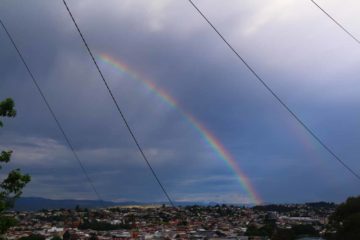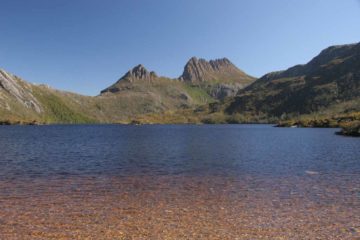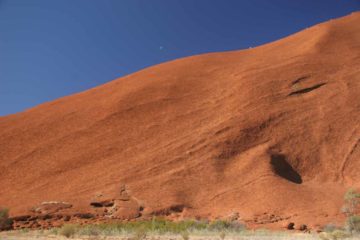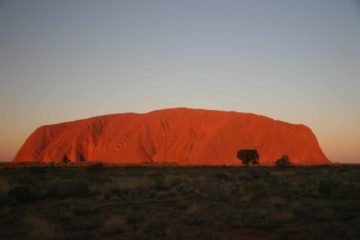About Liffey Falls
Liffey Falls was a series of four distinct waterfalls on the Liffey River where each of them had distinct characteristics as well as unique names. The individual falls were named Alexandra Falls, Hopetoun Falls, Spout Falls (or the Leap), and Victoria Falls, respectively. Although Liffey Falls referred to the entire ensemble of waterfalls, it could also be referring to the last waterfall in the group, which was the tallest and widest of them all. The picture you see at the top of this page was that waterfall. Each time we visited this waterfall, we came with some expectations because of its presence on numerous postcards and calendars in random shops throughout Tassie. Indeed, it seemed to compete with Russell Falls for the title Tasmania’s prettiest waterfall. In addition to the falls itself, there were also giant eucalyptus trees towering over the fern-filled rainforest further adding to the wild ambience of this Tasmanian Wilderness World Heritage Area.
While there was no doubt that Liffey Falls held its own in the scenic department, it seemed like on each of our visits, the falls didn’t show off its full self. Our first visit occurred in November 2006, which was a time when even Tasmania wasn’t immune to the nearly decade-long drought that gripped most of Southeastern Australia. I came back here in November 2017 when it was starting to rain, but even that year, it seemed like Tassie’s eastern side was struggling to get precipitation in its Winter and Spring months. The rain that inconvenienced me on that latter visit was too little too late as far as seeing it with the goal of more volume was concerned. So perhaps it was bad luck on our part that our experiences didn’t quite live up to what we had seen in the literature. That said, the Liffey River tended to flow reliably because it drained a large catchment in the Great Western Tiers.

After checking out this intriguing tree, we then went to the other end of the car park, where the signs led us onto the 1km track said to be 45 minutes in each direction. The track descended as it wandered beneath the forest canopy that started off as a eucalyptus forest but became a denser fern-filled rainforest the deeper we went. The tree cover was actually pretty convenient when it did rain as it appeared to have provided adequate cover until the rains turned into a downpour. The scenery persisted like this for about the first 500m.
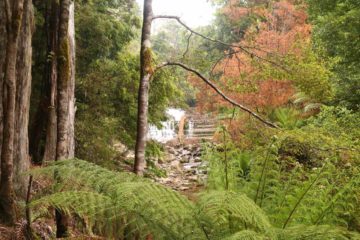
About another 150m further along the track, there was an overlook for the third cascade (Albert Falls or Spout Falls or The Leap). The first time we were here, we managed to get a somewhat clean look at its aptly-named drop from the official lookout, but 11 years later, it appeared that the view was mostly blocked by overgrowth. The cleanest views were actually from its side and not from the developed viewing area. Another 100m beyond this third falls, the track then arrived at a trail junction, where we took the spur path on the left to descend the rest of the way upstream to the Liffey Falls. The trail on the right continued another 90 minutes to the lower car park and campground.
Once we made it to the end of the track, we were presented with an angled look at the attractive multi-tiered Liffey Falls (which could also be called the Victoria Falls). On our first visit here, it was a sunny day and the lighting was non-ideal against this east-facing falls. That said, with the relatively low flow of the Liffey River, we carefully made our way across the slippery sandstone bedrock for more frontal views of the falls, which I’d argue was best photographed and seen from there. On my second visit, it had started to rain hard so I was unable to take the risk of slipping and sliding my way across the river for a similar view (especially if there was a chance of flash flooding).
After having my fill of the Liffey Falls, I then went back the way I came, which was pretty much all uphill. Thus, this was an upside down hike though at least I was able to catch a few breathers by re-experiencing each of the smaller cascades on the way back up. Overall, on each of our visits, we spent around 75-90 minutes away from the car. The confusing signage at the trailhead couldn’t decide if it was 45 minutes one-way (1km total) or 45 minutes return (2km total). But after our visits, it was pretty clear which one was correct.
Related Top 10 Lists
No Posts Found
Trip Planning Resources
Nearby Accommodations
This content is for members only. See Membership Options.Featured Images and Nearby Attractions
This content is for members only. See Membership Options.Visitor Comments:
Got something you'd like to share or say to keep the conversation going? Feel free to leave a comment below...No users have replied to the content on this page
Visitor Reviews of this Waterfall:
If you have a waterfall story or write-up that you'd like to share, feel free to click the button below and fill out the form...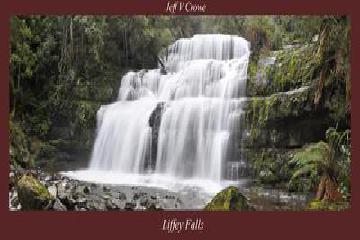 Liffey Falls May 6, 2014 6:17 am - Liffey Falls are found near the head of the River , upstream of the town of Liffey in Tasmania , Australia . It is believed that Tasmanian Aborigines used Liffey Falls as a meeting place . It has been reported that a significant massacre by European colonists , of up to 60 of the Pallittore… ...Read More
Liffey Falls May 6, 2014 6:17 am - Liffey Falls are found near the head of the River , upstream of the town of Liffey in Tasmania , Australia . It is believed that Tasmanian Aborigines used Liffey Falls as a meeting place . It has been reported that a significant massacre by European colonists , of up to 60 of the Pallittore… ...Read More
